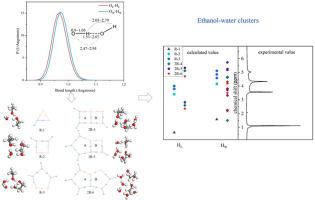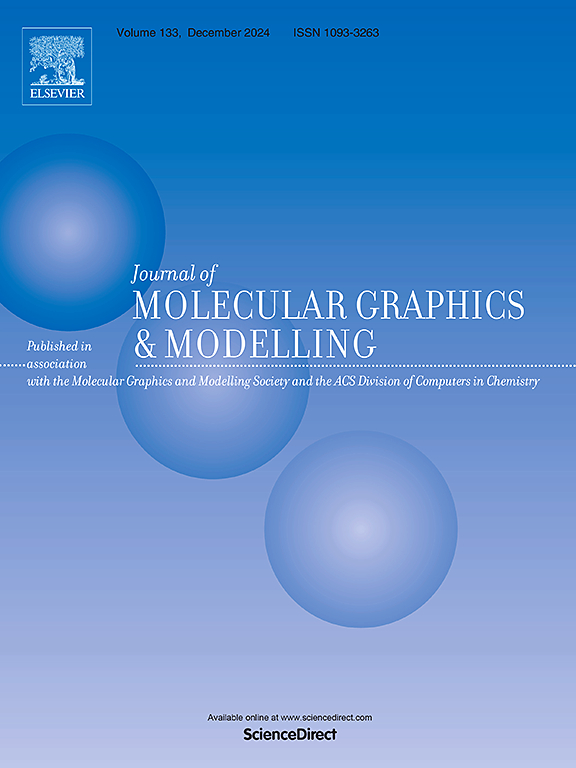酒液微观结构(乙醇-水团)研究:分子动力学模拟和密度泛函理论
IF 2.7
4区 生物学
Q2 BIOCHEMICAL RESEARCH METHODS
引用次数: 0
摘要
乙醇和水是白酒的主要成分。本研究采用分子动力学(MD)模拟和密度泛函理论(DFT)建立乙醇-水团簇模型,并推断乙醇-水溶液的可能结构。核磁共振(NMR)和态密度分析被用来确认团簇的存在并进一步描述其性质。通过比较结合能和计算配位数,我们发现分子比为 1:2 的乙醇-水溶液形成了三个稳定的簇。在理想条件下,簇的比例约为 1:1:6。一般情况下,簇会不断发生分裂和重组。本文章由计算机程序翻译,如有差异,请以英文原文为准。

Investigation of liquor microstructure (ethanol-water clusters): Molecular dynamics simulation and density functional theory
Ethanol and water are the primary components of liquor. In this study, molecular dynamics (MD) simulations and density functional theory (DFT) were used to model ethanol-water clusters and infer possible structures of ethanol-water solutions. Nuclear magnetic resonance (NMR) and density of states analysis were employed to confirm the existence of clusters and further describe their properties. By comparing binding energies and calculating coordination numbers, we found that the ethanol-water solution with a molecular ratio of 1:2 forms three stable clusters. Under ideal conditions, the cluster ratio is approximately 1:1:6. Generally, the clusters undergo continuous splitting and recombination.
求助全文
通过发布文献求助,成功后即可免费获取论文全文。
去求助
来源期刊

Journal of molecular graphics & modelling
生物-计算机:跨学科应用
CiteScore
5.50
自引率
6.90%
发文量
216
审稿时长
35 days
期刊介绍:
The Journal of Molecular Graphics and Modelling is devoted to the publication of papers on the uses of computers in theoretical investigations of molecular structure, function, interaction, and design. The scope of the journal includes all aspects of molecular modeling and computational chemistry, including, for instance, the study of molecular shape and properties, molecular simulations, protein and polymer engineering, drug design, materials design, structure-activity and structure-property relationships, database mining, and compound library design.
As a primary research journal, JMGM seeks to bring new knowledge to the attention of our readers. As such, submissions to the journal need to not only report results, but must draw conclusions and explore implications of the work presented. Authors are strongly encouraged to bear this in mind when preparing manuscripts. Routine applications of standard modelling approaches, providing only very limited new scientific insight, will not meet our criteria for publication. Reproducibility of reported calculations is an important issue. Wherever possible, we urge authors to enhance their papers with Supplementary Data, for example, in QSAR studies machine-readable versions of molecular datasets or in the development of new force-field parameters versions of the topology and force field parameter files. Routine applications of existing methods that do not lead to genuinely new insight will not be considered.
 求助内容:
求助内容: 应助结果提醒方式:
应助结果提醒方式:


